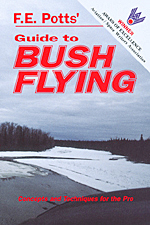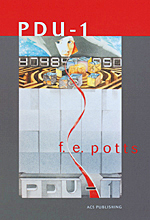By nature I am a gentle person. That's why I prefer living in the remote wilderness far from the hustle and bustle of the cities. In the wilderness I can have peace and quiet and beauty, and of course living far from the road system -- which, because of remoteness, requires that one use a small airplane to visit friends or pick up the mail or go shopping -- does nothing to diminish the situation. Like many Alaskan women, I find what we call bush life the best possible. I like the freedom we can have there, and am less than comfortable in situations where I am expected to rely on others for basics such as protection or shelter or food. Jobs can be lost, the economy can fail, crime can strike; all basically out of one's hands. For me security is the bush: one has their cabin, their chain saw, and their guns. Food is all around, as is the peace and beauty, and one day flows into the next in a stressless rhythm that seems meant to be.
It is a lifestyle that is steadily being eroded, on its way to extinction. Yet one that, for those willing to make the effort, still survives here and there in remote pockets of Alaska and Northern Canada.
For me 1969 was the year of the bear; the time spring, the place my home in the Nizina Valley east of McCarthy in Alaska. I was married to a bush pilot and he was due back from Chitina where he had gone to pick up some customers. Outside the cabin the sun poured down with a luminous beckoning brilliance, light glittering off the river in the distance, and a gentle breeze murmured in the trees. In the forest a squirrel chattered, and high up, on the far side of the river, a raven circled in a thermal, hunting. The cabin, with all chores completed, was no place to be, and the airstrip beckoned. Or perhaps I should say, the trail did.
Trails are something I love. This one left our cabin on its bank overlooking a stretch of gravel bar that led to the river, meandered along it, entered an area of brush, crossed a rocky clearing, wound through a patch of willow and cottonwood, then crossed a field of fireweed to the airstrip. And as it flowed through the sun and shadow so too did I, thermos of coffee in hand for my husband and his customers, the faint hum of an airplane now sounding in the distance. It was our Cessna 180; living in the bush makes one adept at discerning the subtle differences in sound between airplanes, a skill usually developed because sometimes one has cause to worry if everything is all right, especially when the weather is really bad. But that was not the case this day. If anything, quite the opposite.
So, placing the thermos on a fuel barrel, I wandered out onto the airstrip -- just a narrow track the width of the landing gear 800 feet long running from creek to gully between boulders and driftwood -- and started to mosey along it with my mind drifting, deep in thought. I was working on a painting and it was much in my mind, an abstract scene of a Moroccan souk in Marrakech, a study in contrast and shadow and culture, the light of the Sahara glowing deep within it...
--when there was a sudden sound from the brush, combined with a blur, and time abruptly froze:
...a large dark shape in mid-air, teeth and claws, eyes out of a nightmare, my mind in a state of cold unnatural calm as two hands, right and left, met one grasping the other and then there was a loud explosion and I was rolling to the side, onto my feet, gun I did not recollect drawing in my hands, swinging onto target again, half-way through the trigger pull, double-action as before...
--Only to realize I was looking down at the grizzly, that it was lying at my feet, dying, paralyzed by a shattered neck thanks to Smith & Wesson and one of the hot handloads my husband had made for me. There were five left in the gun. The rest were up at the cabin.
Two more I carefully planted in the bear to make sure. I was not in the mood to take chances. Call it insurance.
Then reaction hit. Hard.
* * *
Late that night, long after my husband had gone to bed, I continued to sit at the window looking over the river bathed in moonlight, the gravel bars glowing silver under a thin drifting layer of cirrus that was moving in from the south. And not for the first time I wondered about the artistic temperament, if it were more curse than blessing. Surely it had proved so today.
I absently rubbed the bruise on my back (one of my day's trophies, result of landing on a sharp rock when throwing myself out of the bear's way), brooding on what had happened, and why.
It was the painting, of course, that led to my danger. The shame naturally followed. I could still feel the burning of my face as our airplane flew over the strip a few feet above the brush, still see the four faces looking out at me, at the bear blocking the middle of the runway. Looking at my foolishness, obvious to anyone who really understood the bush, its ways, the ways of survival. For the signs were all there, clearly written in the brush and gravel, unmistakable. Then the plane made a graceful low-level turn and began its approach to a gravel bar about a quarter-mile away, touched down, and came to a stop. Along with assistance in clearing the runway I was going to get questions and have to tell my tale; how I told it depended on the customers: city people, especially those who find it challenging to hunt, see bear and moose differently than we who live in the bush. To us, guns are only tools, something to go shopping with or use for defense, in the same class as our snowshoes and axes. And the animals are not only our neighbors, but a necessary resource. One that has to be cherished and conserved.
Yet when they arrived, carrying rifles that made my old .338 Model 70 back at the cabin look like the well-used tool it was, as worn and scarred as my .44, things did not go as badly as I thought they might; I blushed and spoke of luck (feeling deeply dishonest) and managed to ignore the subtle, knowing smile on my husband's face. And they were very kind, very reassuring. Told me how fortunate I was. How lucky to be alive.
And it was true, but not quite in the sense they meant. For my luck had nothing to do with the accuracy of the shot -- after all, guns have always been easy for me, something I seem to understand instinctively -- but rather with having just enough time to place it properly. Time measured in milliseconds, time that should have been measured in long comfortable seconds if at all. For it was not the bear's fault I was attacked, but mine: I had committed one of the worst crimes of the bush, and in doing so had asked for what I got.
My crime was complacency.
I had allowed myself to become lulled by the nice peaceful day, by how well everything was going, by the inner flow of my painting which had insidiously translated to my outer movements, my way of perceiving the reality around me. Had allowed it even though I knew well that, just as one should not fly when deeply absorbed in other matters on a subconscious level, in a state of profound intellectual abstraction, so too one should not wander the bush. And I had good warning: beside the fact that the most critical time to watch out for complacency is when things seem to be going really well, I also knew the bear were out of hibernation, down low, and in the type of mood one would expect after fasting all winter. Yet, as so often happens in aviation, I had been luckier than I deserved: I had not had to pay the price for my crime.
The bear had paid instead.
My load of guilt was heavy.
Outside the window a shadow dropped from the sky into the brush below the cabin, breaking the still peacefulness of the scene, an owl hunting, a stark reminder of reality...and into my mind flowed part of the painting, an area of shadow in a corner of a colorful and sunny alley behind a group of men in friendly conversation drinking mint tea. And as I watched, the shadow underwent a subtle metamorphosis, another shadow forming within it, almost a trick of the light, just discernible to those who are able to see, who are aware, perceptive. That of a bear, not yet on stage, but waiting. Waiting its moment.
I knew it would be in the finished painting. A reminder to me. There was no way the painting could be completed without it.
And I somehow knew that putting it there would lock it in my mind in such a way it could never be forgotten, or the lesson it had taught.
Perhaps this was the other side of the coin, the blessing that went along with the curse.
Part of the load lifted from my mind.
I smiled, though still somewhat disturbed, and crawled into bed. It had been a long day. With much to be thankful for.
Then, just as I was dropping off to sleep, snuggling close to my husband, the strangeness of that odd characteristic of my art came to mind, how when something once became part of a work's basic structure it became locked into my reality. And I wondered how other people managed to do it, the non-artists among us who kept from repeating history. I knew they had their ways -- I have met too many good pilots and workers in different fields here in Alaska and other places who were not artists. Yet...
Could it be they approached their trade, their life, as a form of art? Even if not consciously? If so, that would explain it. Would make the difference.
An interesting concept. Art is the science of subtlety. Subtlety leads to awareness. Awareness leads to...
And the realization came that life was a continuous miracle, an ongoing revelation. There was always something new to learn, something new to think about. Always a fresh aspect of life to focus on, work into my art. Always something waiting (even if occasionally a bear).
I would have it no other way.

